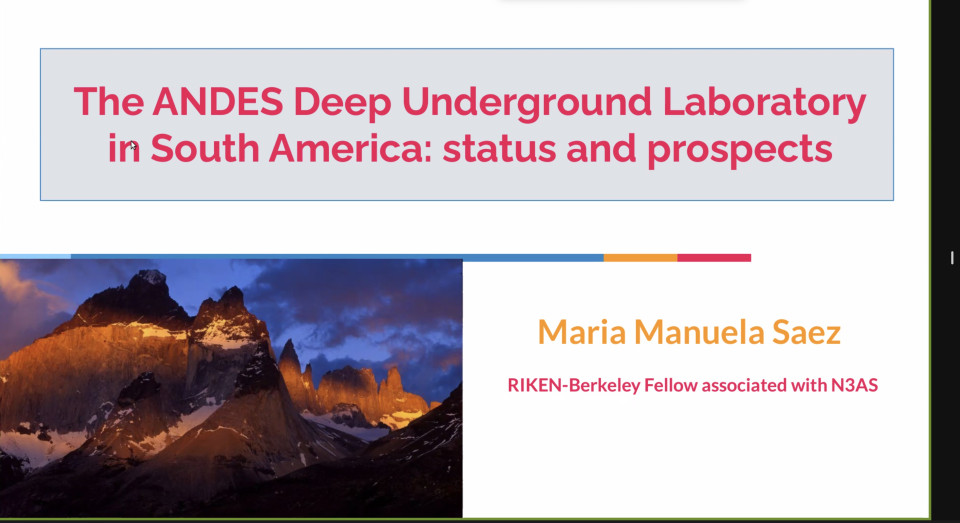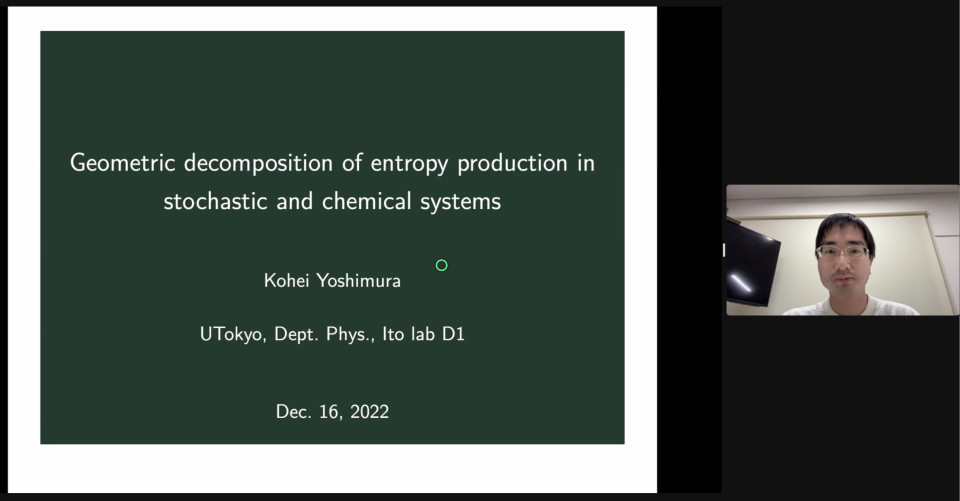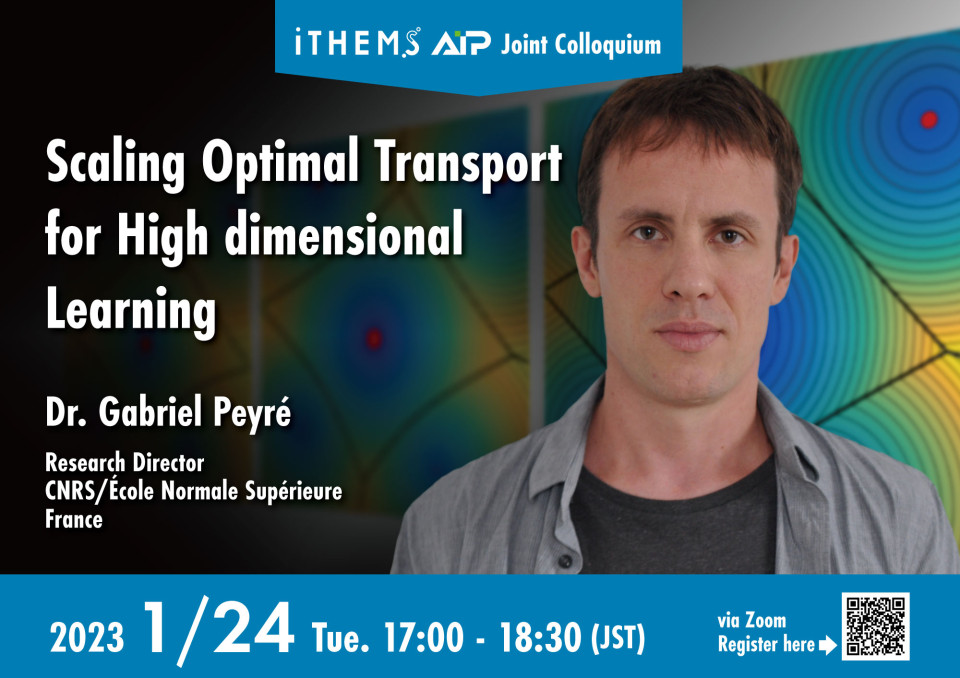Volume 230
Back to Newsletter List
Seminar Report
DMWG Seminar by Dr. Maria Manuela Saez on December 19, 2022
2022-12-20
Please enter the seminar report here!There are many ongoing experiments searching for direct scattering between DM and nuclei all over the world. Of course, the material, location, and detailed setups are different among projects. One of them, the DAMA/LIBRA collaboration has long been reported for the continuous detection of the annual modulation of signals which should be attributed to DM interactions. However, the reports are in tension with all other experiments.
In order for testing the origin of the reported signals, we need further investigations with independent experiments. ANDES (Agua Negra Deep Experiment Site) provides us with such an opportunity. The experiment is planned to be built deep underground in the Andes Mountains at the border between Argentina and Chile. It should prove not only the DM interactions, but also various neutrino physics, nuclear astrophysics, and biological topics. The
One important feature of the experiment is that it is built in the Southern hemisphere and close to the equator compared to other experiments. We can predict a higher amplitude of the annual modulation signals corresponding to DM interactions with these setups. Also, there are no nearby nuclear power plants hence we can expect a lower neutrino background which means better sensitivity. On the other hand, we might have to be careful about the geo-neutrino background at a lower energy regime.
The project is now under construction and investigating the best target materials and realistic equipment. It should start operations in not the far future. Stay tuned for various new insights!
Reported by Nagisa Hiroshima
The ANDES Deep Underground Laboratory in South America: status and prospects
December 19 (Mon) 12:30 - 13:30, 2022
Seminar Report
Information Theory SG Seminar by Mr. Kohei Yoshimura on December 16, 2022
2022-12-20
On December 16th, Mr. Yoshimura gave us a talk about the decomposition of entropy production in stochastic and chemical systems. In the introductory part, he explained the two aspects of entropy production, nonstationarity and breaking of the detailed balance, as well as the strategy to decompose it. He first introduced important concepts such as detailed balance and cycle using an example of a simple Markov jump process. He then generalized the concepts to nonlinear kinetics including chemical reaction network systems. Lastly, he explained how we can decompose entropy production into excess and housekeeping parts, providing explicit simulation results. We are very grateful to him for the well-organized presentation!
Reported by Kyosuke Adachi
Geometric decomposition of entropy production in stochastic and chemical systems
December 16 (Fri) 13:30 - 15:00, 2022
Upcoming Events
Seminar
iTHEMS Theoretical Physics Seminar
Tetra-neutron system studied by RI-beam experiments
January 17 (Tue) 13:30 - 15:00, 2023
Susumu Shimoura (Research Scientist, Spin isospin Laboratory, RIKEN Cluster for Pioneering Research (CPR))
Multi-neutron systems have attracted a long-standing attention in nuclear physics. In several decades, experimental attempts have been made with a particular focus on the tetra-neutron system. Among them, the two different experiments, the double-charge exchange reaction on 4He and the alpha-particle knockout reaction from the 8He, show a sharp peak just above the threshold in the four-neutron spectra, which could be a signature of a "resonant state", separate from a broad bump structure at higher excitation energy regions. Both the experiments have been realized by using the 8He beam above 150 A MeV at the RIKEN RI Beam Factory.
Details of the two experiments including basic idea, experimental techniques, and analysis are presented as well as a historical review of previous experimental attempts. Emphasis is made for the experimental conditions for populating a kinematically isolated tetra-neutron system with very small momentum transfer. The spectral shape is discussed by means of reaction processes and correlations in the final tetra-neutron system with several recent theoretical studies.
Venue: Common Room #246-248, 2F Main Research Building, RIKEN / via Zoom
Event Official Language: English
Seminar
ABBL-iTHEMS Joint Astro Seminar
Understanding kilonova spectra and identification of r-process elements
January 20 (Fri) 14:00 - 15:00, 2023
Nanae Domoto (Ph.D. Student, Department of Astronomy, Graduate School of Science, Tohoku University)
Binary neutron star (NS) merger is a promising site for the rapid neutron capture nucleosynthesis (r-process). The radioactive decay of newly synthesized elements powers electromagnetic radiation, as called kilonova. The detection of gravitational wave from a NS merger GW170817 and the observation of the associated kilonova AT2017gfo have provided with us the evidence that r-process happens in the NS merger. However, the abundance pattern synthesized in this event, which is important to understand the origin of the r-process elements, is not yet clear. In this talk, I will first introduce an overview and current understanding of kilonova. Then, I will discuss our recent findings of elemental features in photospheric spectra of kilonova toward identification of elements.
Venue: via Zoom
Event Official Language: English
Seminar
Information Theory Seminar
Physics-informed deep learning approach for modeling crustal deformation
January 23 (Mon) 10:30 - 11:30, 2023
Naonori Ueda (Deputy Director, RIKEN Center for Advanced Intelligence Project (AIP))
The movement and deformation of the Earth’s crust and upper mantle provide critical insights into the evolution of earthquake processes and future earthquake potentials. Crustal deformation can be modeled by dislocation models that represent earthquake faults in the crust as defects in a continuum medium. In this study, we propose a physics-informed deep learning approach to model crustal deformation due to earthquakes. Neural networks can represent continuous displacement fields in arbitrary geometrical structures and mechanical properties of rocks by incorporating governing equations and boundary conditions into a loss function. The polar coordinate system is introduced to accurately model the displacement discontinuity on a fault as a boundary condition. We illustrate the validity and usefulness of this approach through example problems with strike-slip faults. This approach has a potential advantage over conventional approaches in that it could be straightforwardly extended to high dimensional, anelastic, nonlinear, and inverse problems.
Reference
- Tomohisa Okazaki, Takeo Ito, Kazuro Hirahara & Naonori Ueda, Physics-informed deep learning approach for modeling crustal deformation, Nature Communications, vol. 13, Article number: 7092 (2022), doi: 10.1038/s41467-022-34922-1
Venue: via Zoom
Event Official Language: English
Colloquium
iTHEMS Colloquium
Scaling Optimal Transport for High dimensional Learning
January 24 (Tue) 17:00 - 18:30, 2023
Gabriel Peyré (Research Director, CNRS/École Normale Supérieure, France)
iTHEMS-AIP Joint Colloquium
Optimal transport (OT) has recently gained a lot of interest in machine learning. It is a natural tool to compare in a geometrically faithful way probability distributions. It finds applications in both supervised learning (using geometric loss functions) and unsupervised learning (to perform generative model fitting). OT is however plagued by the curse of dimensionality, since it might require a number of samples which grows exponentially with the dimension. In this talk, I will explain how to leverage entropic regularization methods to define computationally efficient loss functions, approximating OT with a better sample complexity. More information and references can be found on the website of our book "Computational Optimal Transport" (see related link below).
Venue: via Zoom
Event Official Language: English
Paper of the Week
Week 4, December 2022
2022-12-22
Title: Strong Lensing of High-Energy Neutrinos
Author: Yoon Chan Taak, Tommaso Treu, Yoshiyuki Inoue, Alexander Kusenko
arXiv: http://arxiv.org/abs/2212.08793v1
Title: Species interactions and diversity: a unified framework using Hill numbers
Author: William Godsoe, Rua Murray, Ryosuke Iritani
Journal Reference: Oikos e09282 (2022)
doi: https://doi.org/10.1111/oik.09282
Title: Jaccard dissimilarity in stochastic community models based on the species-independence assumption
Author: Ryosuke Iritani, Vicente Luis Jimenez Ontiveros, David Alonso, Jose A Capitan, William Godsoe, Shinichi Tatsumi
doi: https://doi.org/10.1101/2022.12.13.520233
Title: Non-trivial band topology and orbital-selective electronic nematicity in a new titanium-based kagome superconductor
Author: Yong Hu, Congcong Le, Zhen Zhao, Junzhang Ma, Nicholas C. Plumb, Milan Radovic, Andreas P. Schnyder, Xianxin Wu, Hui Chen, Xiaoli Dong, Jiangping Hu, Haitao Yang, Hong-Jun Gao, Ming Shi
arXiv: http://arxiv.org/abs/2212.07958v1
If you would like to cancel your subscription or change your email address,
please let us know via our contact form.
Copyright © iTHEMS, RIKEN. All rights reserved.





